The Economics and Statistics Division maintains archives of previous publications for accountability purposes, but makes no updates to keep these documents current with the latest data revisions from Statistics Canada. As a result, information in older documents may not be accurate. Please exercise caution when referring to older documents. For the latest information and historical data, please contact the individual listed to the right.
<--- Return to Archive
For additional information relating to this article, please contact:
January 15, 2020CANADIAN HOUSING SURVEY: FIRST-TIME HOME BUYERS Results from the new Canadian Housing Survey for 2018 report on conditions for homebuyers, distinguishing first-time homebuyers (those purchased within the 5 years) from non-first-time homebuyers and renters. The data reports on the type of structure in which a respondent household lives, the age and family structure of respondents and their satisfaction with their dwelling and neighbourhood. The data are available for provinces, cities as well as for different sizes of community within each province.
In Nova Scotia, there were 410,800 households, of which 31.1 per cent (127,700) were renters, 61.7 per cent (253,600) were homeowners who did not purchase their first home within the previous 5 years while there were 29,500 first time homebuyers (7.2 per cent), meaning they had purchased their first home within the last 5 years. Nova Scotia has a higher share than the national average of long-term homebuyers and a lower share of renters and first time home-buyers. The share of first-time home buyers is highest in Alberta, the share of long-term home owners is highest in Newfoundland and Labrador and the share of renters is highest in Quebec.
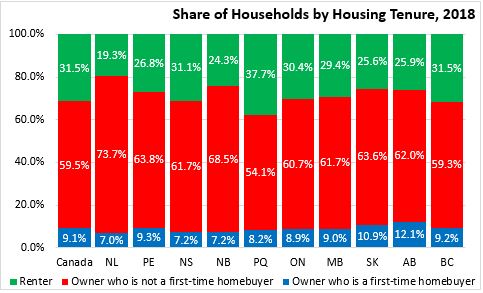
Home ownership and demographics of households varies by size of community. It is important to note that a much larger share of households are located in rural areas in each of the Atlantic Provinces. Atlantic Canada and Saskatchewan have larger populations in small urban centres. The share of the population in larger urban areas is lower in Atlantic Canada and higher in Ontario and British Columbia.
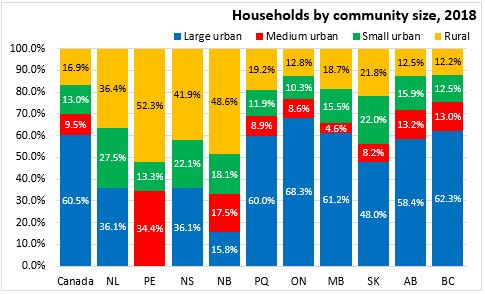
Note: under these definitions, there are no large urban areas in Prince Edward Island and no medium-sized urban areas in Newfoundland and Labrador or Nova Scotia.
Within Nova Scotia, the largest share of households is made up of those living in rural areas who are long-term home-owners. The next largest groups of the population are renters in large urban areas and long-term home-owners in large urban areas. Across Canada, the majority of households live in urban areas either as long-term home-owners or renters.
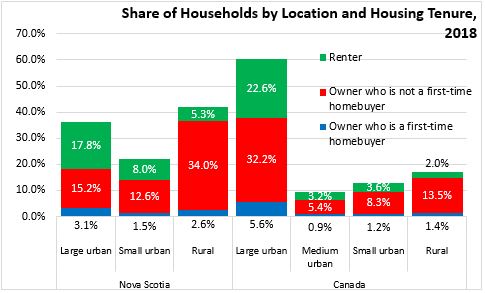
The majority of first time homebuyers across Canada generally acquire single-detached dwellings. But this varies by province. Nova Scotia first time home buyers are the most likely to have a single detached dwelling (78.3 per cent of first time home buyers) while those in British Columbia are least likely to have a single-detached dwelling. First time home buyers in British Columbia, Ontario and Quebec are more likely to own apartment-style dwellings (including condos).
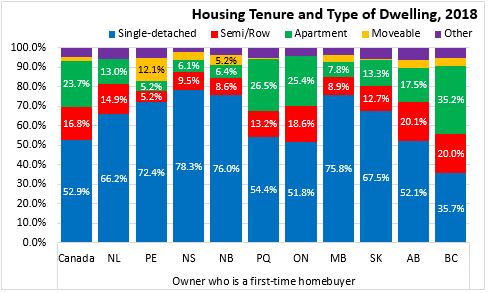
The majority of established home-owners in Canada own single-detached dwellings, even in British Columbia, Ontario and Quebec. Long-term ownership of single-detached dwellings was highest in Atlantic Canada, Manitoba and Saskatchewan.
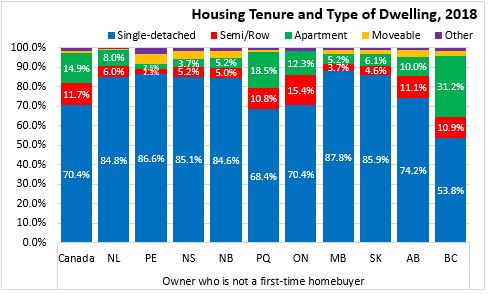
Across Canada, the majority of renters are located in apartment-style dwellings.

Within Nova Scotia, first time home buyers are most likely to own single detached dwellings in smaller population centres and rural areas. In large urban areas, the majority of first time home buyers own single detached dwellings, but ownership of semi-detached and row housing is more common. In large urban centres of Canada, first time home buyers are notably less likely to own single-detached dwellings and more likely to own apartment-style dwellings.
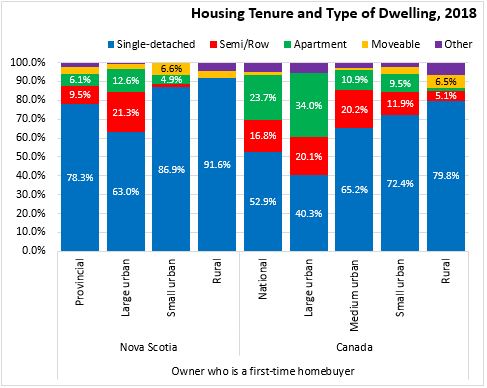
Long-established home owners predominantly own single-detached dwellings, though this share is smaller in larger urban centres.
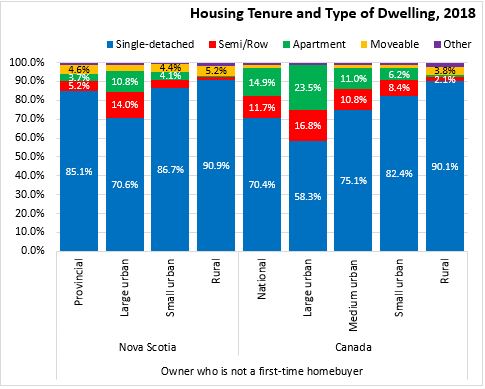
Renters in rural areas are notably more likely to live in single-detached dwellings.
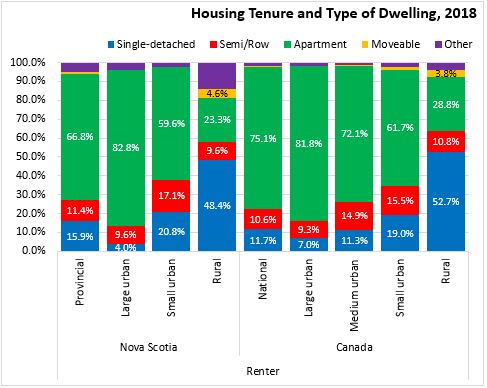
The majority of first-time home buyers are found among younger age cohorts (25-34 and 35-44). This is disproportionate to their share of the overall population. Among long-term home-owners and renters the proportion of the population by age cohort is closer to their share of the overall population. The pattern is similar for larger urban centres as well as smaller centres and urban areas.
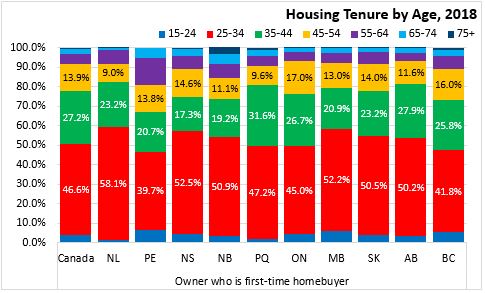
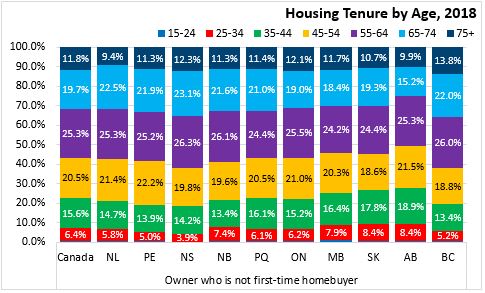
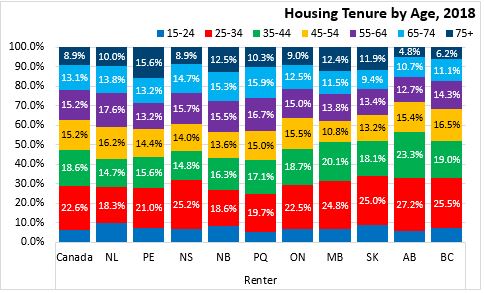
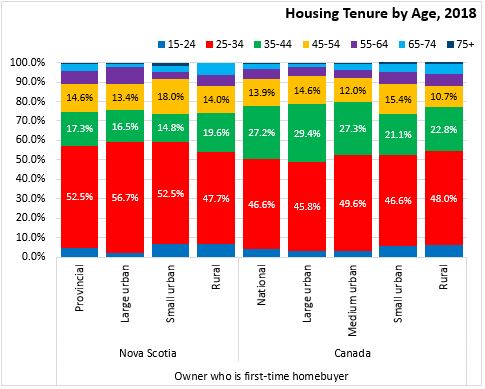
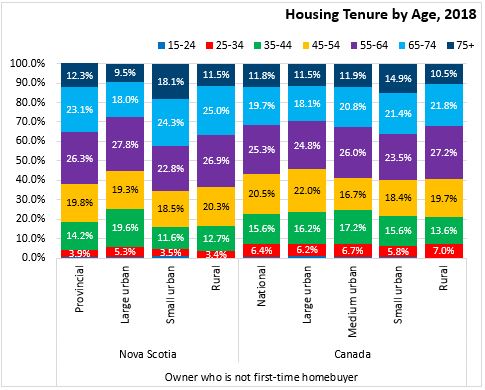
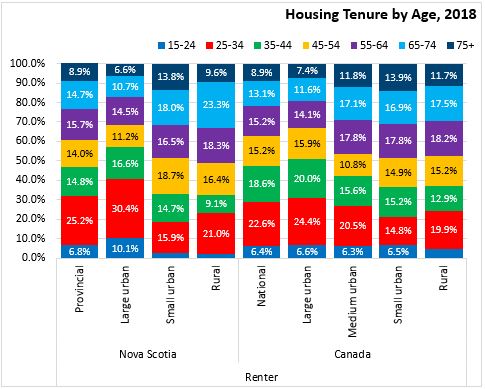
With the exception of British Columbia, the majority of first time home-buyers are couples. There are also a sizable portion of first time home buyers who are one-person households.

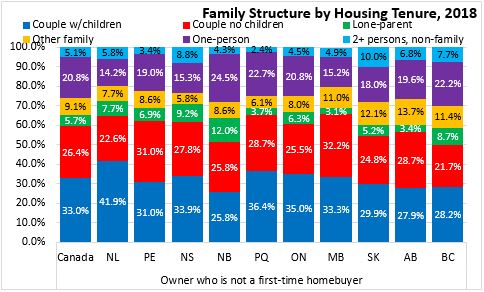



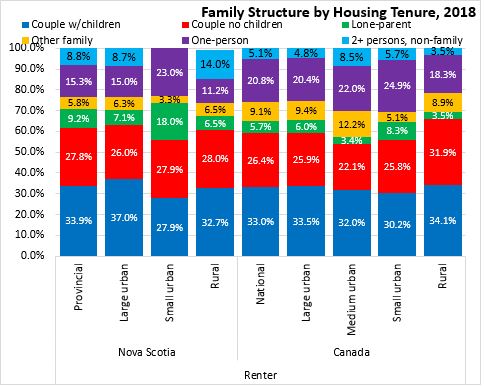
In most provinces (British Columbia, Manitoba and Newfoundland and Labrador excepted), first time home buyers are satisfied or very satisfied with their dwelling. Long-term home owners report even higher satisfaction with their dwelling while renters report less satisfaction with their dwelling (though the majority of renters are either satisfied or very satisfied).
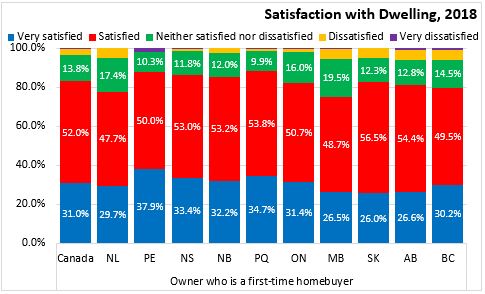
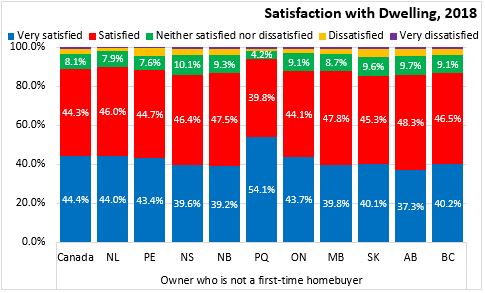
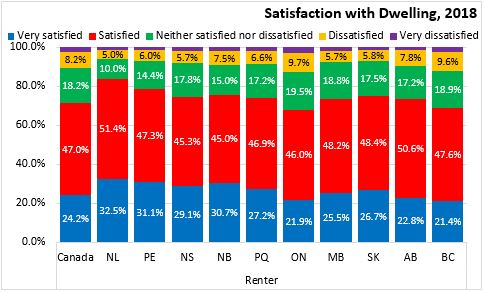

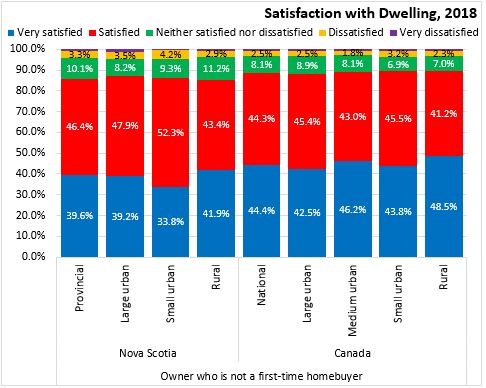
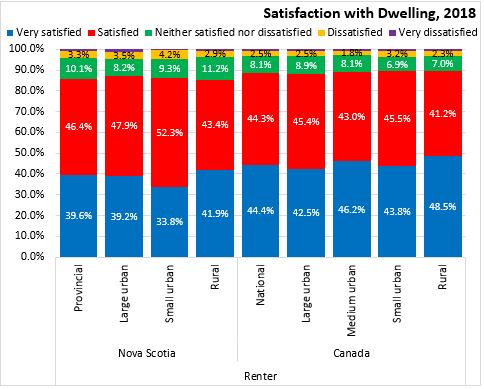
As with their dwellings, most Canadians are satisfied with the neigbourhood within which they live. However, satisfaction is lower in Ontario and Western Canada.
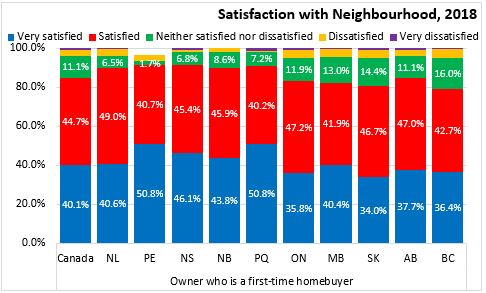
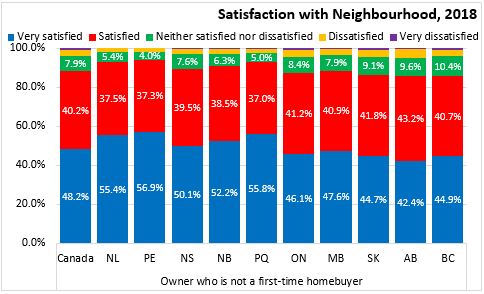

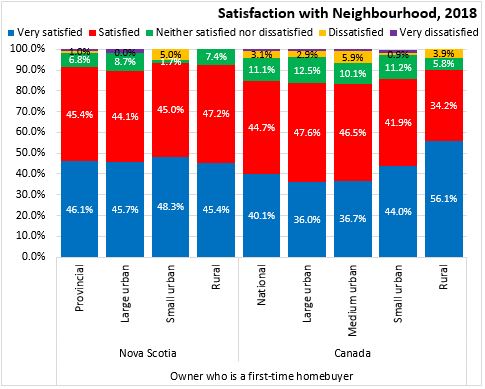
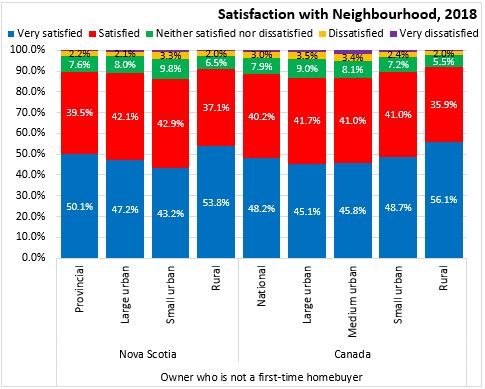
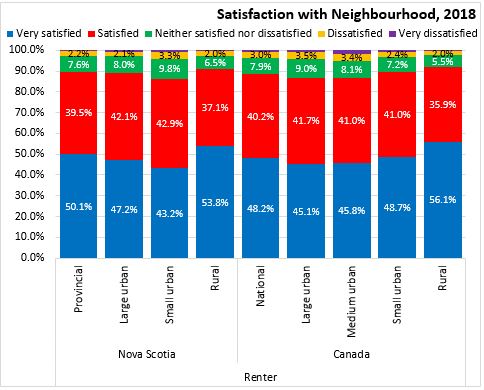
Source: Statistics Canada. Table 46-10-0036-01 Housing indicators, by tenure including first-time homebuyer status
<--- Return to Archive